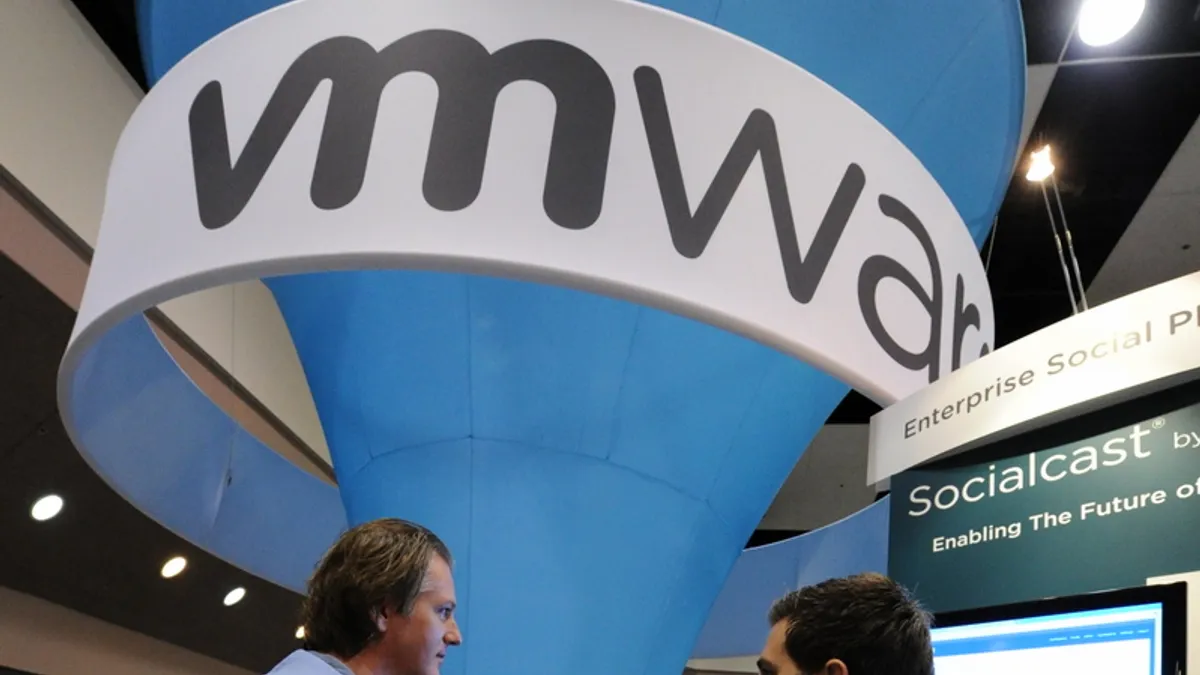Two years since its beta announcement, software company VMware announced the general availability of its enterprise-grade blockchain platform, VMware Blockchain, on Wednesday.
The company's platform lets businesses deploy decentralized applications in a multiparty environment, according to a company announcement. The description of the tool fits blockchain's target use case in the enterprise software market, which often involves the need for immutable transactions across multiple stakeholders.
Though desktop virtualization was historically the core of VMware's offering, it's "no longer an accurate viewpoint" to think of the company solely as a niche provider, said Homan Farahmand, senior research director at Gartner.
Think of the blockchain launch as another step toward establishing an end-to-end digital foundation, Farahmand said.
The challenge ahead for the vendor is to find the fit between the technology, the problems it can help solve and CIOs in search of solutions. Amid dwindling budgets for emerging technologies, prospective clients will need to see examples of successful deployments that can help make the case for blockchain in the enterprise.
"What VMware needs to do is really prove that it can deliver," said Bennett.
The vendor can point to two companies working to deploy its blockchain platform, with support from technology partner Digital Asset: Broadridge Financial Solutions and the Australian Securities Exchange (ASX).
"VMware first started looking into blockchain a few years ago, in the same way as just about every vendor did, as nobody wanted to miss that wave," said Martha Bennett. "Many vendors gave up again when they realized that this technology isn't an instant money maker but a long-term strategic play. VMware didn't."
Last year the company infused Kubernetes into its vSphere platform, a sign of flexibility within its strategy for competing in the cloud market.
"Many organizations are looking for providers that can offer production-grade advanced blockchain features such as high performance, scalability, privacy, interoperability and a rich ecosystem of developers and tooling to future-proof their investment," said Farahmand.
The blockchain opportunity
How big is the market opportunity in blockchain? Global IT budgets took a hit this year in light of COVID-19, and so, too, did worldwide blockchain spend: reaching $4.3 billion, or a 7.7% contraction from IDC's previous forecast.
But by 2023, global blockchain budgets are expected to reach $14.4 billion, signaling further opportunity down the road.
As VMware enters the competition alongside existing enterprise blockchain providers — including IBM and Oracle — it will need to prove to the market there is added value in selecting its technology.
One way it can get there is to provide concrete examples of what problems its blockchain platform can solve, and of the business and operational upsides it presents.
The continued presence of established players, and the entrance of new competitors, signals a certain stage of advancement. IBM, for example, has seen how deployment of blockchain services can catalyze the use of other cloud services within its existing offering.
Given blockchain's maturity, enterprise leaders no longer need to turn to proofs of concept in order to confirm if the technology works, said Martha Bennett, VP, principal analyst at Forrester.
"We know that it will," Bennet said. The question then becomes whether or not blockchain is an appropriate solution to any specific use case or industry.
Failure to align the enterprise problem at hand, the capabilities of a specific technology such as blockchain and the resources a platform would require can lead to sunken costs and missed expectations in enterprise adoption.
Blockchain capabilities are designed to enable a "frictionless programmable economy," according to Farahmand. Friction points exist across many assets found in multiparty processes, such as:
- Financial transactions
- Insurance claims
- Securities trade
- Capital market
- Trade finance
- Supply chain management, logistics and transportation
- Healthcare
- Public services and records.
"If the organization is struggling with friction in the current value chain, blockchain may play a role as a stepping stone toward disintermediation and decentralization," said Farahmand.
In the case of ASX turned to VMware's new platform to support increasing transaction volumes. The technology "can help financial services firms transform data, preserve privacy and confidentiality, and remove manual processes,” said Dan Chesterman, CIO of ASX, in the announcement.
Fixing this issue can also unlock new kinds of customer and tokenized assets that can create new markets, economies and value streams.
"One of the huge attractions of a blockchain network is the transparency it provides and the data sharing capabilities," said Bennett. "That has its downside in that not everybody is supposed to see everything for all kinds of reasons.
Similar to their appetite for technology platforms in AI, in deploying blockchain platforms CIOs will seek platforms that can provide clear business results, which is partly the result of a post-COVID prioritization of resources.
Projects in the enterprise blockchain that haven't yet gotten off the ground are influenced by a lack of certainty over whether or not the technology can scale to what the business needs it to, according to Bennett.
"That's really where, from an enterprise perspective, the value is in VMware: if that software really lives up to its promise," said Bennett. "What we now need to see is the deployment."




















